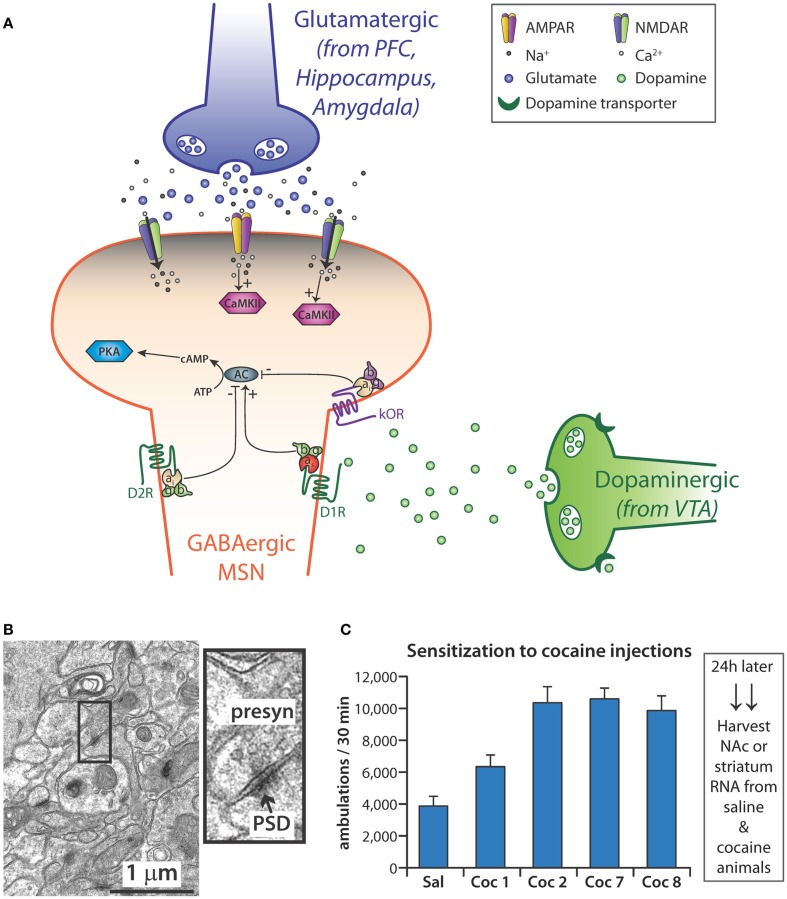Figure 4.
(A) Medium spiny neurons (MSN), which use γ-NH2-butyric acid (GABA) as their major transmitter, are the primary cell type in the nucleus accumbens (NAc). Some MSNs express mostly the D1 dopamine receptor while others express primarily the D2 dopamine receptor. Dopamine released from the endings of dopaminergic neurons in the ventral tegmental area (VTA) signals through both types of receptor, affecting the activation of adenylate cyclase (AC); reuptake of dopamine by the dopamine transporter (DAT) is blocked by cocaine. MSNs receive excitatory inputs from glutamatergic neurons in the prefrontal cortex (PFC), hippocampus, and amygdala. Activation of AMPA and NMDA receptors localized to the spine-studded dendrites of MSNs leads to the influx of Ca2+ and activation of CaMKII. In addition, MSNs are responsive to various neuropeptides, which bind to G-protein coupled receptors such as the κ-opioid receptor (κOR). (B) Standard procedures have been developed to purify postsynaptic densities (PSDs) from tissue homogenates; miRNAs enriched at the PSD are thought to allow local regulation of mRNA translation and stability. The electron micrograph (7 week mouse hippocampus) illustrates the complex system from which PSDs must be purified: presynaptic terminals can be recognized by their content of synaptic vesicles; PSDs are closely apposed to the presynaptic endings. (C) Sensitization to the locomotor stimulating effects of cocaine requires repeated exposure to the drug. Adult mice typically are typically given 10–20 mg cocaine/kg; locomotor activity (ambulations) is monitored for the next 30 min in an activity chamber with infrared light sensors. “Sal” is the average locomotor data for all mice given saline initially and the mice given saline throughout; Coc1 are data for mice give 10 mg/kg cocaine on day 1; Coc2 and Coc7 are data from days 2 and 7 for mice given 20 mg/kg cocaine daily for days 2–7; Coc8 are the data for the cocaine treated mice given 10 mg/kg on day 8; substantial locomotor sensitization is apparent compared to Coc1. Tissue harvested soon after drug administration allows analysis of the immediate response, while tissue harvested 24 h after final drug administration allows evaluation of the steady state response. N = 10 each for saline and cocaine.

